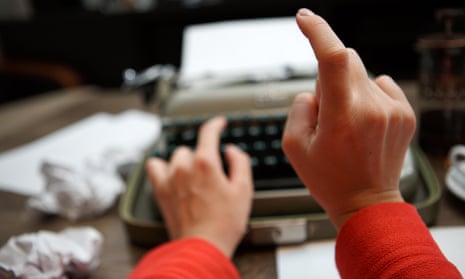Have you ever learned to touch-type? I ask because new research from Finland suggests that, if so, it was, um, probably a waste of time. The methods of professional typists have been studied for decades, going back to the 1920s, but Anna Maria Feit and Dr Daryl Weir at Aalto University noticed that there had been very little research into how people type in the real world – something that we now do more than ever. So they carried out the first study to compare the two – trained and untrained.
Their recruits were “everyday typists” aged between 20 and 55, some skilled in touch-typing, some not. They attached motion-capture buttons to their finger joints, eye-tracking glasses to their heads, and filmed them typing.
“Surprisingly,” as the final report puts it, “we find that regardless of the number of fingers involved, an everyday typist may achieve entry speeds of more than 70wpm. Even some participants using only one or two fingers per hand can achieve a level of performance you’d expect from touch typists.” These results include a measure of accuracy, by the way, as it is only the words spelled correctly that are being counted.
Some quick caveats: it may well be that the ultra-fast competitive typing speeds above 120wpm can only be reached by touch-typing. None of the typists in the study got close to that level. Also, touch-typists look at the screen most of the time, and much less at their fingers, which may help them concentrate better on some tasks.
Self-taught typists were found to have developed many different styles, but they were often just as quick as each other – at least where the number of fingers were concerned. Even two or three fingers pecking frantically were seen to get the job done as well as a whole hand. The main factor influencing speed was not the number of fingers used, but the stillness of the palm.
“Keeping your hands relatively steady and only using your fingers to move forward for the keys,” is the secret, according to Dr Weir. As a result, fast typists tend to be quite consistent in which finger strikes which key. They’re also the ones unconsciously thinking ahead. “So another finger is reaching for the next key, even before the first one is pressed”, explains Dr Weir.One final tip, this time from me. Try not to think too much about how you type while you are actually doing it. That’s a good way to become self-conscious and forget your technique – self-taught or otherwise – altogether.

Comments (…)
Sign in or create your Guardian account to join the discussion